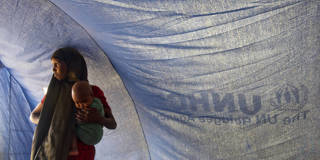A decade after 150 governments adopted the "Responsibility to Protect," the world's record in defending populations from mass-atrocity crimes remains grim. But the prevailing explanation for this failure – a conflict between “the West,” promoting intervention, and “the rest,” defending sovereignty – is misleading.
BERLIN – Ten years ago, world leaders agreed that the international community had a “responsibility to protect” populations from genocide, crimes against humanity, war crimes, and ethnic cleansing. A decade later, the world’s record in fulfilling the Responsibility to Protect (R2P) remains poor, with hundreds of thousands of people in Iraq, Syria, Myanmar, Sudan, South Sudan, the Central African Republic, Burundi, Nigeria, and the Democratic Republic of the Congo still threatened by mass atrocities. If R2P is to work for them, we must dispel some widespread myths and focus our energies on the practical challenges of protection.

BERLIN – Ten years ago, world leaders agreed that the international community had a “responsibility to protect” populations from genocide, crimes against humanity, war crimes, and ethnic cleansing. A decade later, the world’s record in fulfilling the Responsibility to Protect (R2P) remains poor, with hundreds of thousands of people in Iraq, Syria, Myanmar, Sudan, South Sudan, the Central African Republic, Burundi, Nigeria, and the Democratic Republic of the Congo still threatened by mass atrocities. If R2P is to work for them, we must dispel some widespread myths and focus our energies on the practical challenges of protection.